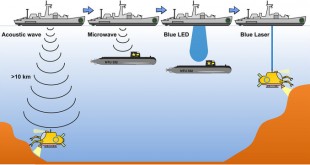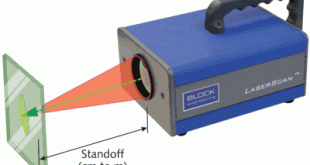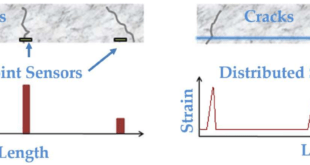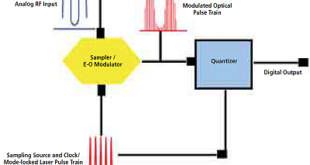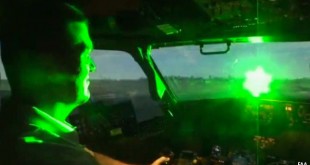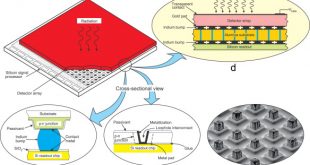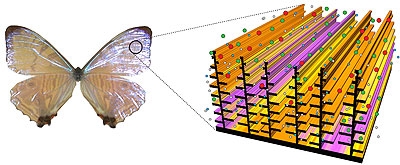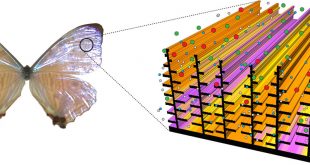A reliable long-distance and high-speed underwater communication link plays an important role in the undersea exploration and data collection. At present, the most widely used underwater communication method is still dominated by underwater acoustic communication. Although it can reach the transmission distance of several kilometers and more, the data rate …
Read More »New Visible light Communications or LiFi technologies enabling Internet of Things, Vehicular networks, 5G mobile and Underwater networks
It is predicted that LEDs will be the ultimate light source in the near future powering indoor illumination, outdoor lamps, traffic signs, advertising displays, car headlights/taillights, etc. Li-Fi, or light fidelity, promises to double the utility of light-emitting diodes (LEDs) by using their light as a medium to deliver networked, …
Read More »Quantum cascade laser (QCL) critical component for standoff chemical warfare agent detection and Direct Infrared Countermeasure (DIRCM) systems
The quantum cascade laser is a special kind of semiconductor laser, usually emitting in the mid- and long-wave infrared bands. Such a laser operates on laser transitions not between different electronic bands but on intersubband transitions of a semiconductor structure. Their wide tuning range and fast response time allow for faster …
Read More »Distributed optical fiber sensors (DOFS) are superb for infrastructure and earthquake monitoring
The fiber optic sensors also called as optical fiber sensors use optical fiber or sensing element. These Sensors can measure a large variety of parameters, such as temperature, pressure, strain, refractive index, vibrations, displacements, bending, loading, and liquid level or concentration of chemical species. Over the past decade, optical …
Read More »Photonic ADCs have removed the bottlenecks of bandwidth limitations and timing jitter of electronic analog-to-digital converter (ADC)
The performance of digital receivers used in modern military radar, communication, and surveillance systems is often limited by the performance of the analog-to-digital converter (ADC) used to digitize the received signal. Ultrafast ADCs are critical in military applications such as military software-defined radio, radar, and electronic counter-warfare (ECW) that require …
Read More »Militaries looking for anti-laser weapon defences as laser DEW threats to airline pilots, soldiers and military vehicles is rising
Laser attacks targeting pilots and air crews are a major concern across the world with most attacks reported to take place during take-off and landing. According to figures from the US Federal Aviation Authority, there were 6,753 laser illuminations reported in 2017. Until recently, the expense of lasers had limited their use …
Read More »Militaries developing Vehicle mounted Lasers Directed Energy Weapons to counter swarm of Drones , C-RAM (Counter Rocket, Artillery and Mortar) and subsonic cruise missiles
The drones have emerged as a major new threat to civilian infrastructure and military. The militant organizations have started employing drones to further their terrorism. Jihadi groups fighting the Syrian government – most notably ISIS and Jabhet al-Nusra – are extensively using advanced drones to pinpoint the Syrian Army’s locations, …
Read More »DARPA is developing curved infrared focal plane arrays FPAs to improve optical performance and widen field of view while reducing system size of military imagers
Smartphone camera technology is growing in leaps and bounds in the past couple of years and continues to be a major point to differentiate their products. The commercial development of curved image sensors is one of the biggest advance in camera technology in decades, allowing for simpler, flatter lenses with …
Read More »Bio-Inspired or Biomimetic Photonics create highly selective Gas sensors and Artificial Eye like insects
Researchers have looked into nature for inspiration, understanding the mechanisms animals, insects and plants use to capture and process light and then designing next generation optoelectronics devices and systems like light-emitting diodes (LEDs), sensors and materials. Biomimicry has led to the development of several naturally inspired structures, such as curved …
Read More »DARPA’s thrust on Bio-Inspired Photonics
Nature provides many examples of optical structures whose properties arise from an intricate morphology. The brilliant colors seen in butterfly wings, beetle carapaces, and peacock feathers, for example, are due in large part to their complex structure, says DARPA. These hierarchical structures, scaling from micron to nanometer level, achieve remarkable …
Read More » International Defense Security & Technology Your trusted Source for News, Research and Analysis
International Defense Security & Technology Your trusted Source for News, Research and Analysis
